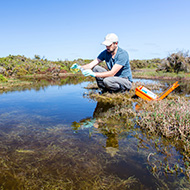Horses with lower levels of collagen type III are at higher risk.
Researchers from the Royal Veterinary College (RVC) have developed a new genetic risk scoring system, after discovering new factors contributing to thoroughbred horses’ likelihood of fracture .
Their research revealed that thoroughbred horses with lower levels of collagen type III were at higher risk of fractures.
RVC’s research team, led by Dr Debbie Guest, developed a polygenic risk scoring system to measure horses’ disease risk. The system considers a variety of genes to assess the risk, which the team then used to look at the distribution of scores across the UK’s thoroughbred population.
Using this data, the researchers then selected cells from horses at either end of the risk spectrum to study further.
The cells were examined in a laboratory, to establish a cell model and find new genetic factors that may be involved in fracture risk.
The studies revealed that the horses with a higher risk of fracture also had lower levels of collagen type III. Collagen type III is a gene, found in their bone cells, which is required for normal bone formation.
The researchers say that this lack of collagen type III is a result of a change in their DNA sequence, in the region controlling how much collagen III is produced.
Further research will seek to validate the risk-scoring system using another group of horses. Studies will also use this system and cell model to identify any other genes and processes which may contribute to fracture susceptibility.
Dr Guest, project lead and senior research fellow at the RVC, said: “The development of a polygenic risk score for fracture will allow us to identify horses that are at high genetic risk to allow the targeted use of diagnostic imaging and close monitoring of their bone health.
“This study has also demonstrated the power of using cell models to work out what differences exist in bone cells from high and low-risk horses and therefore why some horses are at high risk.
“This is vital to develop new interventions for high-risk horses in the future so that they are less likely to suffer from a catastrophic fracture."
The full study can be found here.
Image © Shutterstock



 A set of international guidelines for disease surveillance in wildlife has been updated for the first time since 2015.
A set of international guidelines for disease surveillance in wildlife has been updated for the first time since 2015.